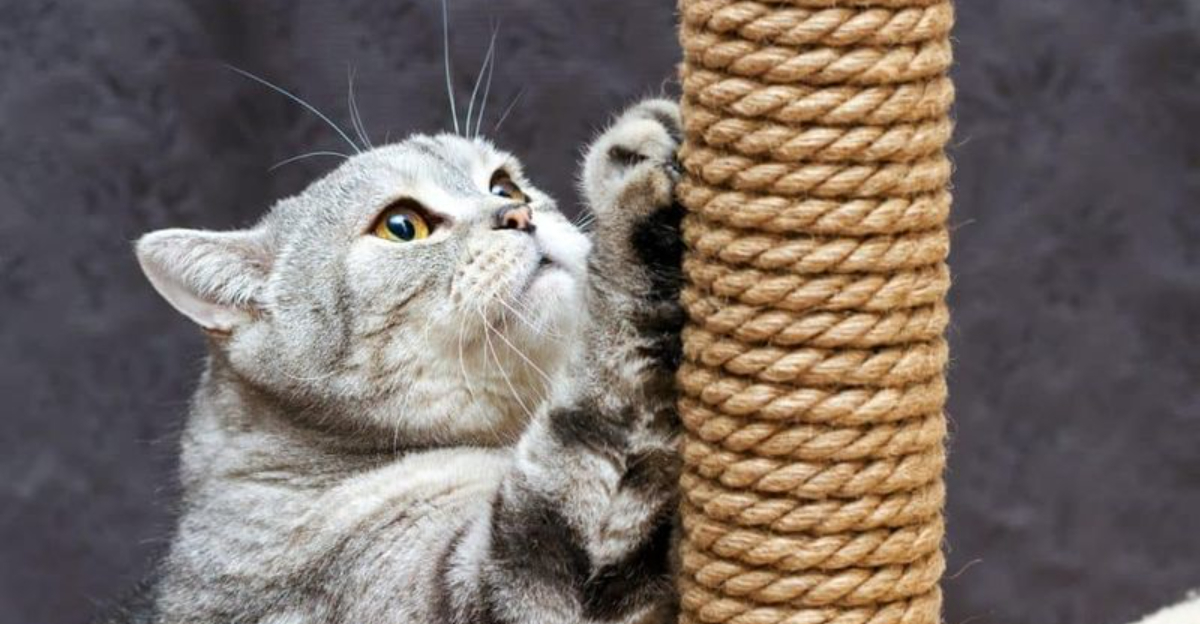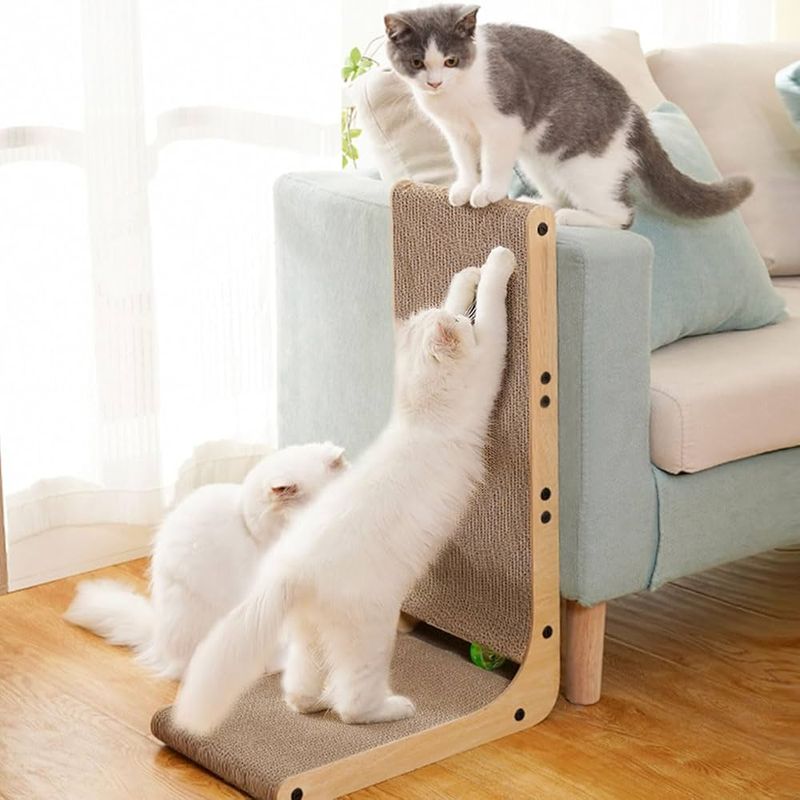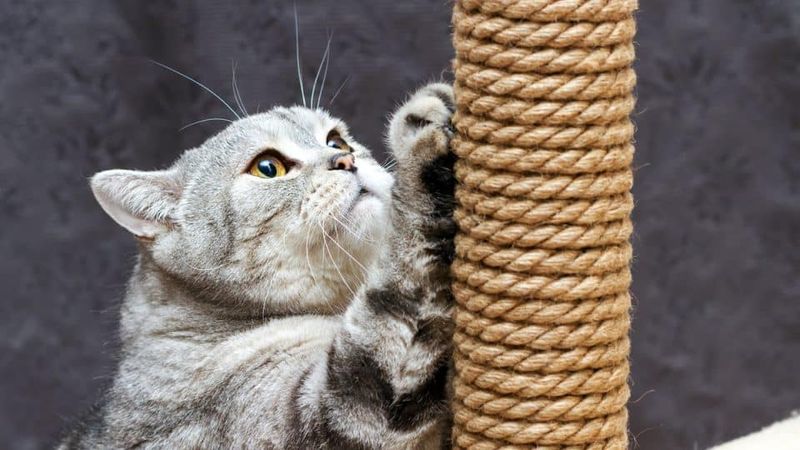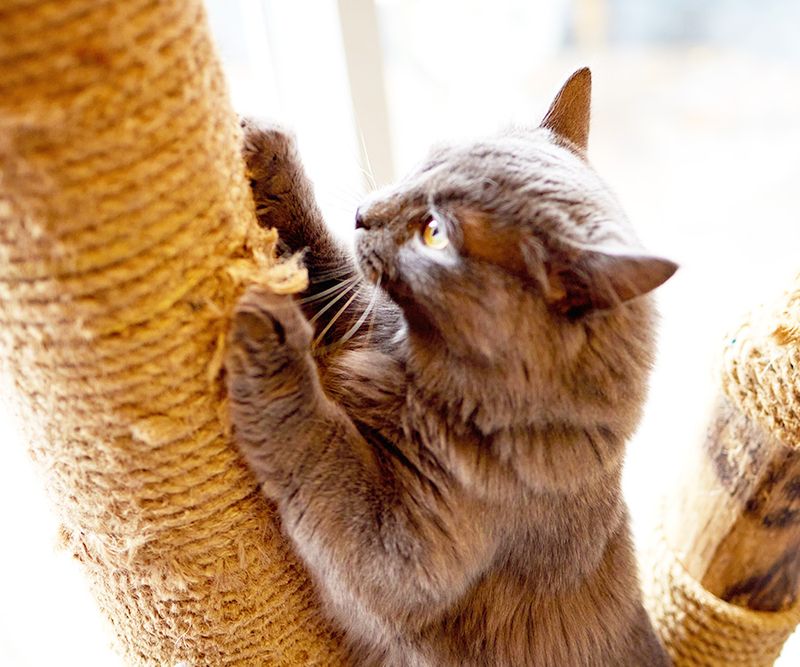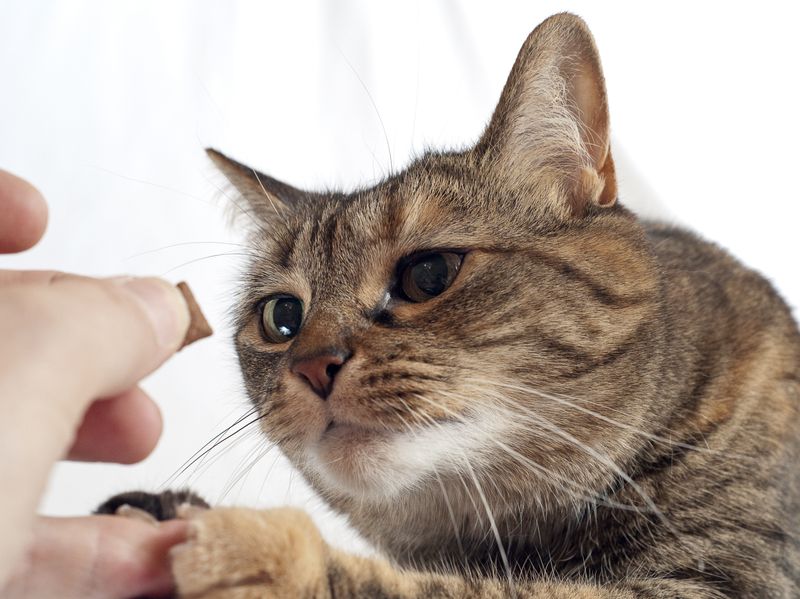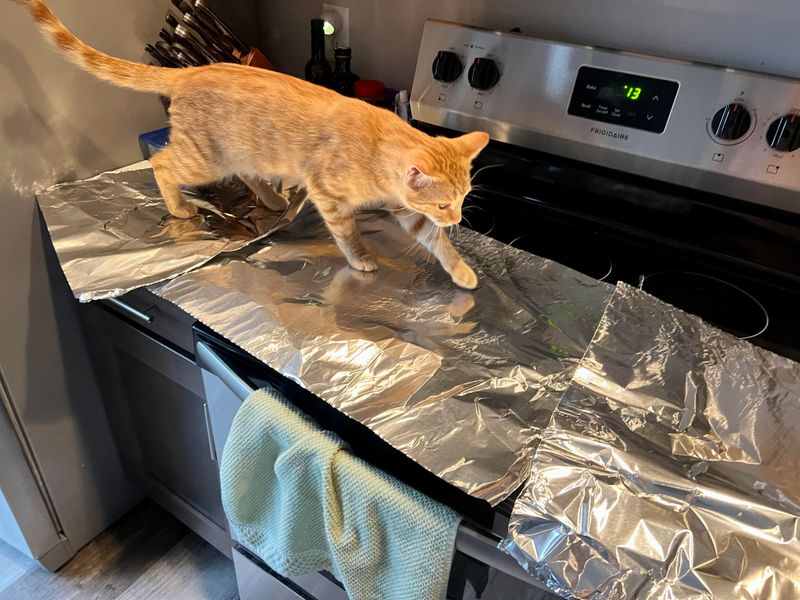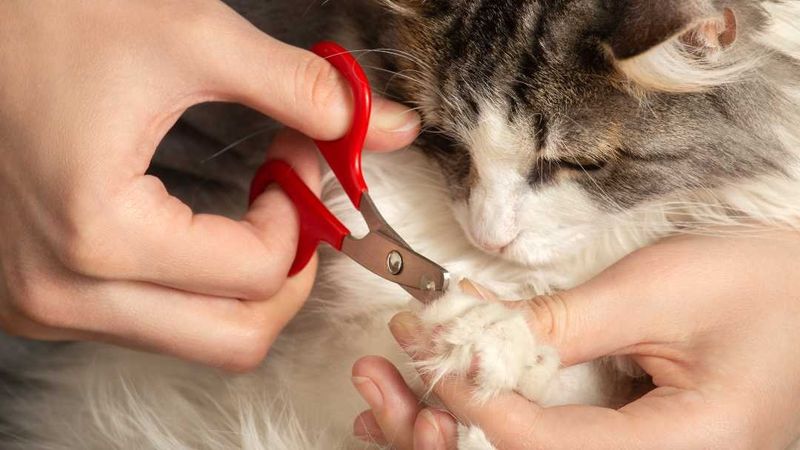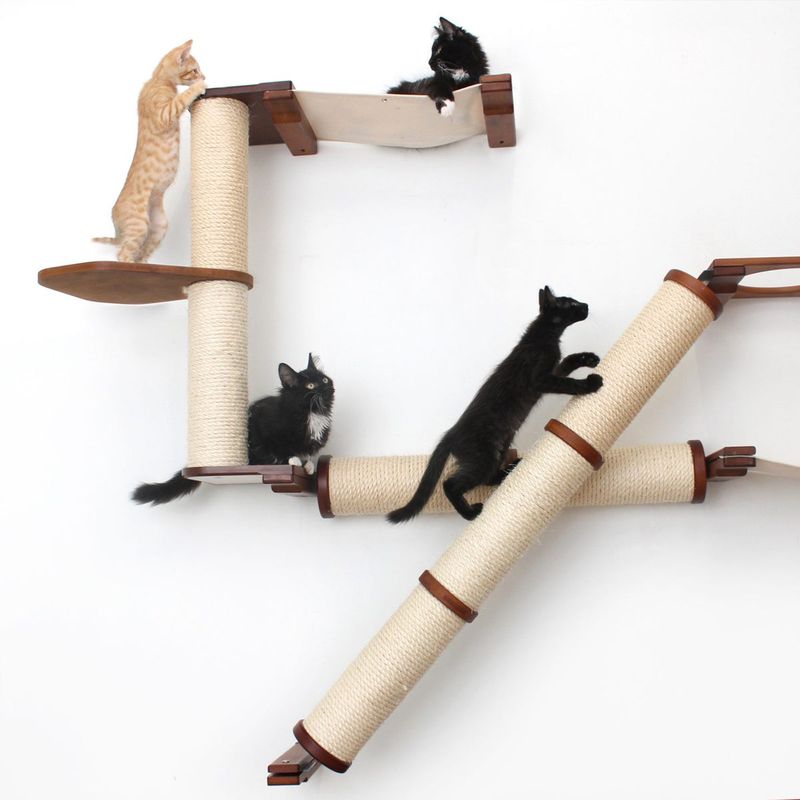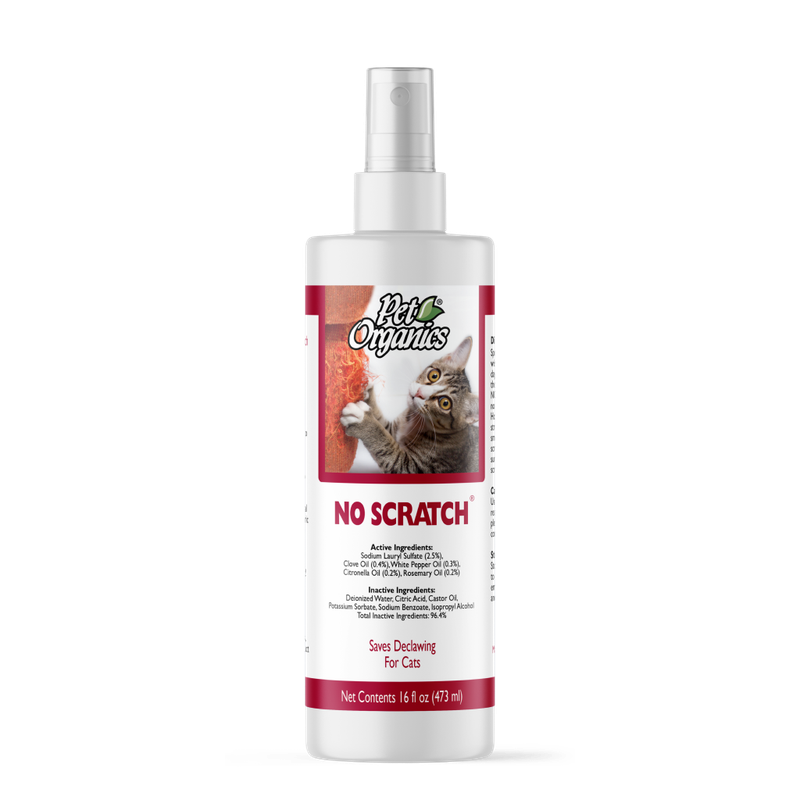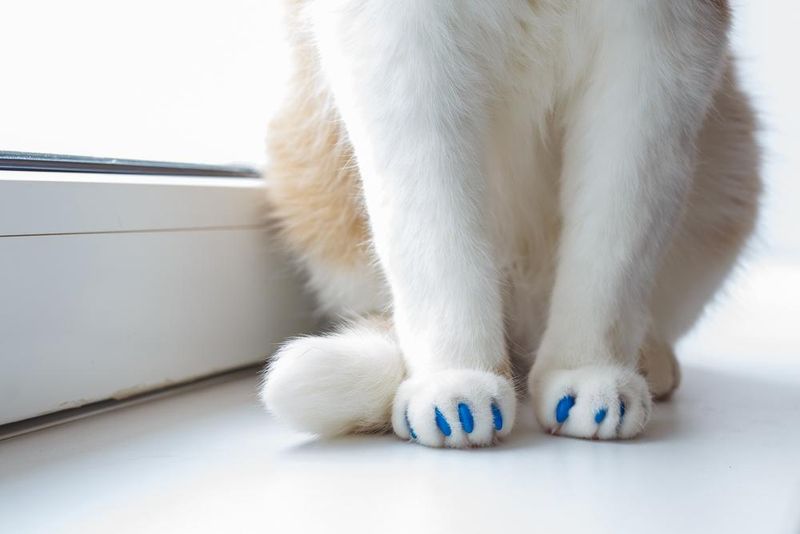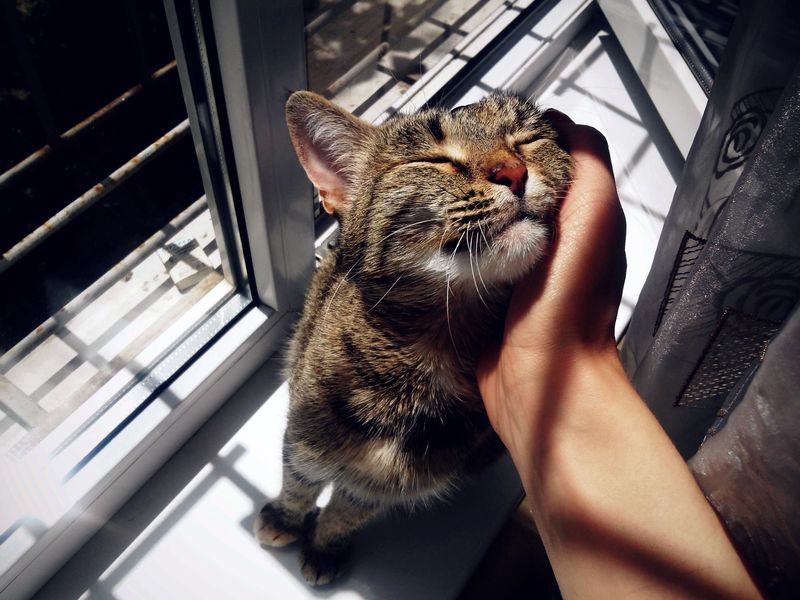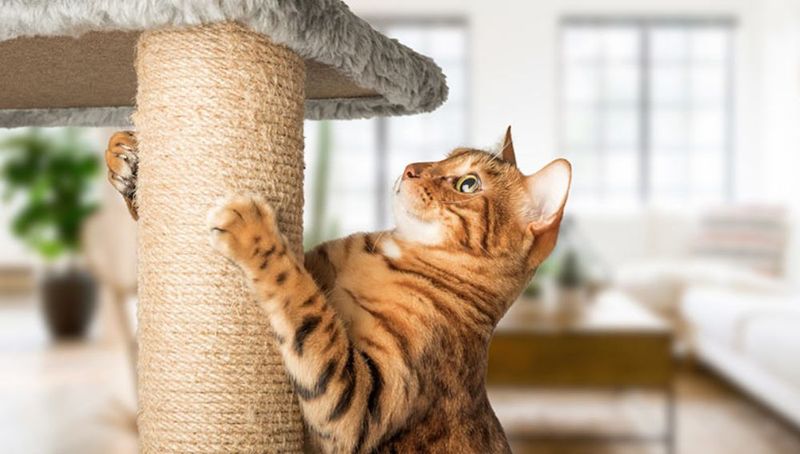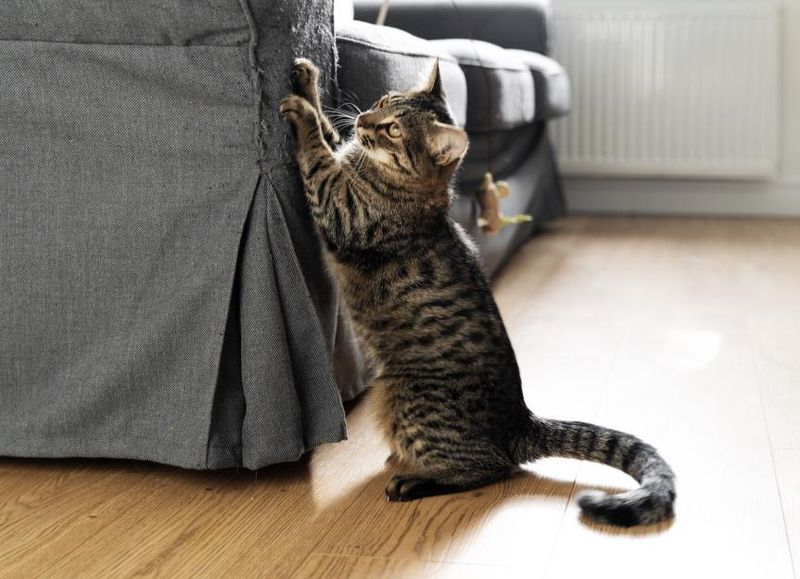📖 Table of Content:
- 1. Provide Appropriate Scratching Surfaces
- 2. Identify and Cater to Scratching Preferences
- 3. Strategic Placement of Scratching Posts
- 4. Use Positive Reinforcement
- 5. Make Unwanted Scratching Areas Unappealing
- 6. Regular Nail Trimming
- 7. Provide Environmental Enrichment
- 8. Use Deterrent Sprays
- 9. Consider Nail Caps
- 10. Avoid Punishment
- 11. Maintain Consistency
- 12. Consult a Veterinarian or Behaviorist
- 13. Be Patient and Understanding
Is your cat turning your furniture into a scratching post? Scratching is a natural and necessary behavior for cats, but it doesn’t have to mean shredded sofas and frayed rugs. In this blog, we share 13 smart, effective strategies to help you manage and redirect your cat’s scratching in a healthy, stress-free way.
From choosing the right scratching posts and placing them strategically, to using scent-based deterrents and understanding the emotional triggers behind excessive scratching, these tips are designed to protect your home and respect your cat’s instincts. You’ll also learn how to reinforce good habits, avoid common mistakes, and create a more harmonious environment for both you and your feline companion.
Whether you’re a new cat parent or dealing with a long-time scratcher, this guide offers practical solutions that really work.
1. Provide Appropriate Scratching Surfaces
Cats scratch to mark territory and maintain claw health. Offer scratching posts made from sisal, cardboard, or wood. Place these alternatives near areas where your cat likes to scratch. Ensure the posts are sturdy to encourage natural behavior. This allows your cat to follow its instincts without damaging furniture. By providing a variety of textures and positions, your cat will be more likely to use them. The right surfaces will keep both your home and your cat content. Encourage your feline friend in a positive manner with the proper gear.
2. Identify and Cater to Scratching Preferences
Understanding your cat’s scratching preference is key. Some cats like vertical surfaces, while others prefer horizontal ones. By observing where and how your cat scratches, you can provide posts that match these inclinations. This thoughtful approach ensures that your cat has satisfying outlets for scratching. Offering the right type of post can reduce destructive behavior. Your cat will feel content and understood with the right setup. It transforms potential frustration into a fulfilling experience for both of you.
3. Strategic Placement of Scratching Posts
Position scratching posts near areas your cat frequents, like the couch or bed. This proximity encourages your cat to use the post instead of the furniture. By placing posts in your cat’s favorite spots, you redirect natural behavior effectively. It’s a simple yet effective strategy to maintain harmony in home decor. Your cat will appreciate having its needs met while your furniture stays intact. The balance between cat-friendly and stylish living can be achieved with some thoughtful placement.
4. Use Positive Reinforcement
When your cat uses a scratching post, reward it with treats or affection. Positive reinforcement strengthens the association between the post and positive outcomes. This method encourages your cat to repeat the desired behavior. By reinforcing good habits, you build a trusting relationship with your feline friend. It’s a win-win: your cat learns and your furniture remains unscathed. Celebrate your pet’s achievements with love and rewards. This gentle guidance leads to lasting behavioral improvements.
5. Make Unwanted Scratching Areas Unappealing
To prevent scratching in unwanted areas, cover them with materials like double-sided tape or aluminum foil. Cats dislike these textures, which discourages them from returning. Adding scents like citrus can further keep cats away. This tactic protects your furnishings while guiding your cat to suitable scratching zones. It’s a creative way to maintain home aesthetics without stress. Redirecting scratching behavior becomes a manageable task with these deterrents. Protecting your space with thoughtful barriers benefits both you and your pet.
6. Regular Nail Trimming
Keeping your cat’s claws trimmed is crucial for minimizing scratching damage. Regular nail care helps prevent claws from snagging fabrics and reduces injury risks. It’s a simple routine that has lasting benefits for both your cat and your belongings. Trimming should be done carefully using proper tools for a stress-free experience. This practice enhances your cat’s comfort and your home’s condition. Regular grooming sessions foster a bond of trust and care. They’re an essential part of responsible pet ownership.
7. Provide Environmental Enrichment
Engage your cat with interactive toys and climbing structures. A stimulated cat is less likely to engage in unwanted scratching behaviors. Regular play sessions provide mental and physical exercise. Enrichment transforms your home into an exciting playground. This method keeps your cat’s mind and body active, reducing boredom-related mischief. It builds a happier relationship with your pet through joyful interaction. Providing an enriched environment is key to a well-adjusted feline.
8. Use Deterrent Sprays
Cat-safe deterrent sprays can be applied to areas you want your cat to avoid. These sprays emit scents that cats find unpleasant, steering them clear of treated surfaces. It’s an effective way to manage your cat’s behavior without confrontation. By using these sprays, you protect your belongings and guide your cat’s habits. They serve as invisible boundaries within your home, keeping harmony intact. Deterring unwanted scratching becomes easy with this straightforward approach.
9. Consider Nail Caps
Soft nail caps can be applied to your cat’s claws to prevent scratching damage. These caps are glued over claws and need replacement every few weeks. Ensure your cat is comfortable with this option. Nail caps are a gentle way to protect your furniture without affecting your cat’s daily activities. They’re an innovative solution for persistent scratchers. This humane approach keeps your home pristine while respecting your cat’s instincts. Managing scratching becomes less stressful with this handy tool.
10. Avoid Punishment
Punishing your cat for scratching is ineffective and can lead to fear. Instead, focus on redirecting the behavior and rewarding positive actions. Understanding and patience pave the way for effective behavior management. Avoiding confrontation fosters trust between you and your pet. This method ensures a happier and more cooperative feline companion. Positive interactions build a lasting bond of trust and respect. It’s about teaching rather than punishing, leading to harmonious living.
11. Maintain Consistency
Consistency is crucial in applying these strategies. Over time, your cat will associate scratching posts with positive experiences. Sticking to a routine reinforces desired behavior. Consistency nurtures a stable environment where your cat feels secure. It takes persistence, but the results are rewarding. Your cat will eventually embrace the new routines with enthusiasm. Patience and regular practice make the difference in successful behavior management. It’s an investment in a peaceful home.
12. Consult a Veterinarian or Behaviorist
If scratching persists despite efforts, seek advice from a veterinarian or behaviorist. They can provide tailored strategies and check for health issues. Professional guidance offers insights beyond basic training. These experts help uncover underlying causes of persistent behavior. Their expertise provides a path to resolution. Collaboration with professionals ensures comprehensive care for your feline. It’s a proactive step towards understanding and improving your cat’s habits. Expert support is invaluable in complex situations.
13. Be Patient and Understanding
Changing behavior takes time. Patience is essential as your cat adjusts to new habits. Providing positive reinforcement for desired behaviors is key. Understanding that change doesn’t happen overnight fosters a loving environment. Your cat thrives in a supportive setting. Kindness and encouragement lead to lasting behavioral changes. It’s about building a strong connection and guiding your pet gently. Steady patience and love ensure a harmonious relationship with your feline.
